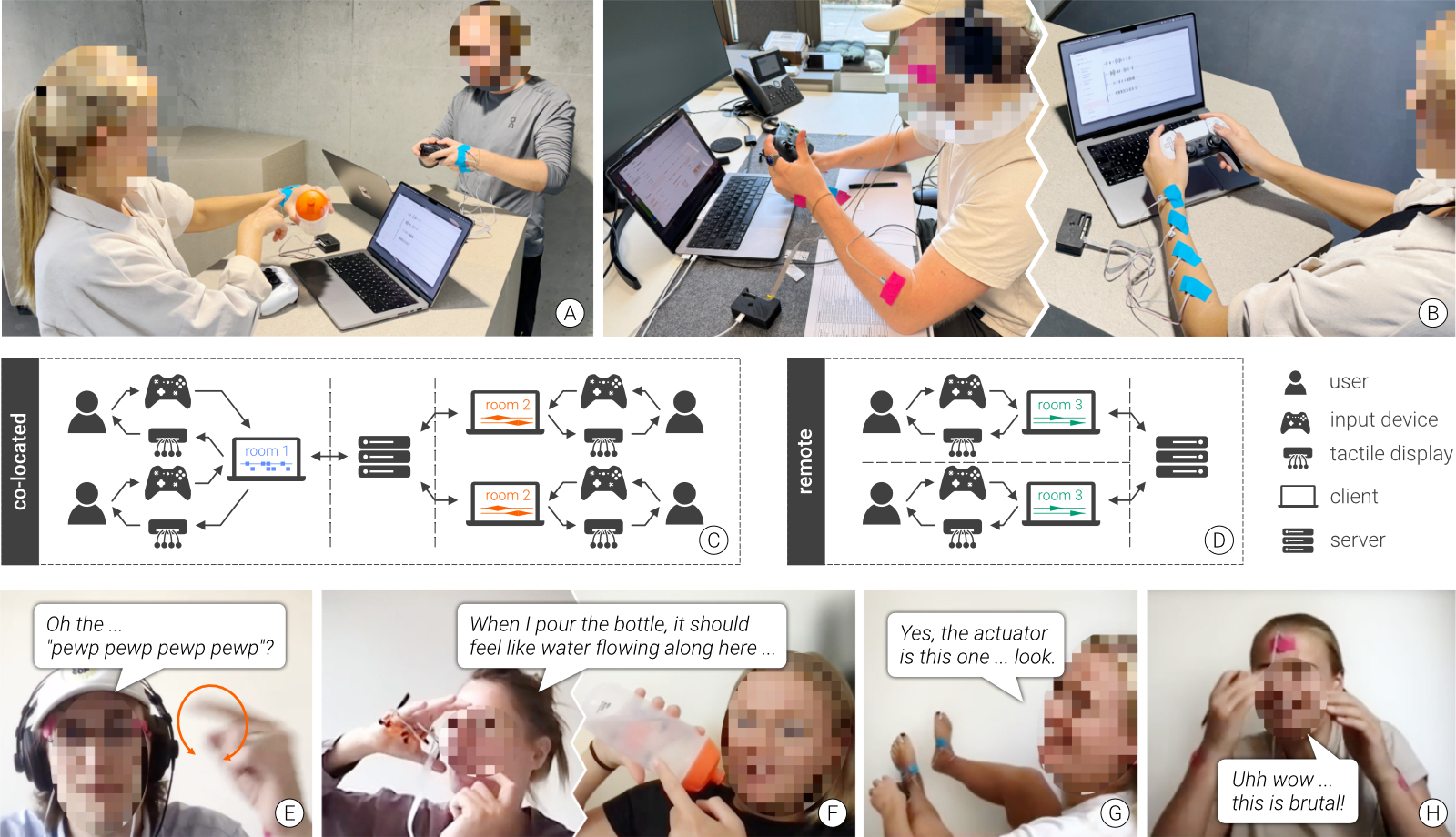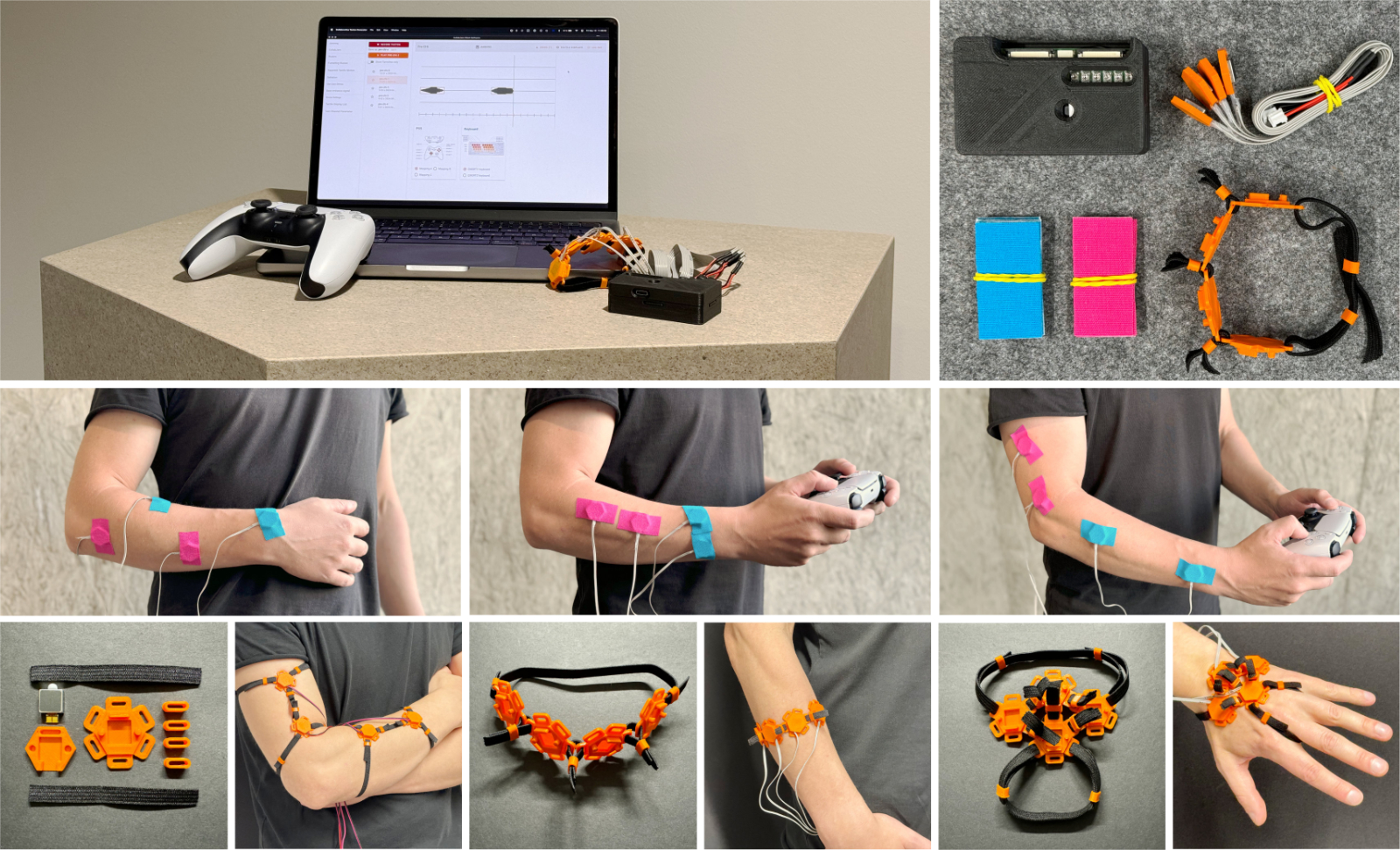Designing vibrotactile experiences collaboratively requires communicating using multiple senses. This is challenging in remote scenarios as designers need to effectively express and communicate their intention while iteratively building and refining experiences, ideally in real-time. We formulate design considerations for collaborative haptic design tools, and propose CollabJam, a collaborative prototyping suite enabling remote synchronous design of vibrotactile experiences for on-body applications. We first outline CollabJam’s features and present a technical evaluation. Second, we use CollabJam to understand communication and design patterns used during haptic experience design. We performed an in-depth design evaluation spanning four sessions in which four pairs of participants designed and reviewed vibrotactile experiences remotely. A qualitative content analysis revealed how multi-sensory communication is essential to convey ideas, how stimulating the tactile sense can interfere with personal boundaries, and how freely placing actuators on the skin can provide both benefits and challenges. All the code and schematics are available online, and all experimental resources are on OSF.
2025
HapticsAuthoring ToolCollaboration
See also bARefoot Squish this Weirding Haptics Tactjam

CollabJam is a prototyping suite for collaborative vibrotactile experience design. It enables collaborators to design in co-located (A) (C) and remote scenarios (B) (D) with actuators they can place freely on their bodies. We studied communication patterns when collaboratively designing vibrotactile experiences in an empirical study. A qualitative analysis revealed in part that multisensory communication was essential to communicate through gestures (F) and sometimes onomatopoeia (E), that communication about and reproducing actuator placement was challenging (G), and that tactile actuation could interfere with personal boundaries and required to be adjusted to one’s sensitivity (H).
Designing vibrotactile pattern in collaboration We investigated communication and design patterns used by remote collaborators when designing vibrotactile feedback synchronously. We formulated design considerations that led to the creation of a novel prototyping suite called CollabJam. This suite extends the state-of-the-art on prototyping on-body vibrotactile experiences with direct and shared controls of actuators to create vibration patterns with co-located or remote collaborators. It consists of a software design tool connected to a global server and a hardware device controlling four independent actuators that one can place on their body. Users can connect to virtual rooms to share a remote-tactile space, feel vibrations synchronously, and mute others if needed. They can create vibrotactile patterns by pressing buttons on a keyboard or game-pad, record sequences for playback, and edit these patterns using visual representations or by overdubbing new tactile inputs. Additionally, users can document their patterns and provide feedback on their experiences.
Malleable actuators for full-body vibrotactile experiences To support the design of various full-body experiences, we decided to make all actuators independent and provide designers with means to attache each of them on their body, wherever they wanted to (see image below). The device is bluetooth to even allow moving in space while testing the experiences designed.

Qualitative content analysis to identify communication patterns and design implications We conducted a user study involving 4 pairs of haptic designers over 4 one-hour sessions. They had to design experiences, and review experiences from others. We transcribed all the sessions and conducted a qualitative content analysis to find themes in the collaborative design process, and particularly communication patterns. We identified 5 design implications emphasizing designers need their own space to design in solo before sharing ideas, the system should facilitate split experiences in smaller parts to re-use, all senses (touch, vision, hearing) are important for the collaboration, placing actuators and communicating about it is challenging, and amplitude of vibrations have to be adjusted to each individual. All the details about the procedure and the results are available in the paper.
CollabJam: Studying Collaborative Haptic Experience Design for On-Body Vibrotactile Patterns Dennis Wittchen, Alexander Ramian, Nihar Sabnis, Richard Böhme, Christopher Chlebowski, Georg Freitag, Bruno Fruchard, Donal Degraen CHI'25: Proceedings of the ACM SIGCHI Conference on Human Factors in Computing Systems